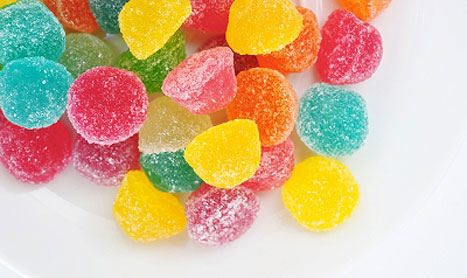 There’s nothing wrong with having a bit of a sweet tooth, but are you addicted to sugar? The amount of sugar we consume – especially the refined kind that’s not so good for us – has grown dramatically in recent years.
There’s nothing wrong with having a bit of a sweet tooth, but are you addicted to sugar? The amount of sugar we consume – especially the refined kind that’s not so good for us – has grown dramatically in recent years.
Our bodies aren’t designed to cope with large quantities of highly processed sugar, and as a result many of us are on a daily rollercoaster when it comes to our energy levels. Not to mention the numerous potential health problems that can be aggravated by eating too much sugar, including heart disease, diabetes, PCOS and irritable bowel syndrome.
What processed sugar does
Our body uses sugars as energy, but it can get this energy in a number of ways. For example, if you eat a piece of wholegrain bread, it will get broken down into sugars by your digestive system over a period of time and give you a slow release of energy that tapers off slowly as well.
If you eat a teaspoon of processed white sugar in your coffee or a bag of lollies, it gets converted into energy quicker which gives you a fast ‘hit’ of energy and will consequently drop away quickly as well, causing an energy ‘crash’ which makes you crave sugar again to fix it.
Why we crave sugar
It’s not just energy levels that make us crave it; sugar actually affects our brain chemistry. It’s still being debated by scientists whether sugar is actually addictive, however, neuroscientists have found that sugar can stimulate the release of dopamine in a part of our brains which is associated with motivation and reward – the same area that responds to drugs such as heroin and cocaine.
Often we are also raised as children to believe that sweet treats are ‘rewards’ for doing something well. ‘Be good and you can have an iceblock/cupcake/biscuit/lollies’ is now a common behaviour controller, and it seems logical that part of that reward feeling must continue into adulthood.
How do I ditch my sugar cravings?
It will come down to taking small steps one at a time to retrain yourself:
- Eat a healthy breakfast every day consisting of some carbohydrate – preferably wholegrain – and some kind of protein. This is non-negotiable and a good place to start, as it kickstarts your metabolism in the morning.
- Eat 5-6 small, well-balanced meals throughout the day to ensure your energy levels will remain relatively constant throughout the whole day.
- Empty your cupboards and work desk drawer of any processed, sugary snacks and replace them with healthier options instead.
- Learn your triggers – What time of the day do you usually crave sugar? Why are you craving it? What emotion are you feeling at the time? Bored? Stressed? When you ask yourself these questions you will begin to recognise your ‘danger zones’ and then you can begin working out an action plan to tackle them.
- Drink plenty of water and exercise regularly.
- Learn to read nutrition labels and learn to recognise other words for sugar. Sucrose, fructose, glucose…
- As an emergency backup plan, eat a piece of fruit. Even though they will contain sugar (fructose), at least you will be getting natural fibre and vitamins/minerals at the same time. Remember that when it comes to serving sizes, you can have one large piece of fruit – such as a banana or apple, two smaller pieces of fruit – such as mandarins or apricots, or a handful of small fruit – such as grapes or blueberries.
Image / FreeDigitalPhotos.net – antpkr

